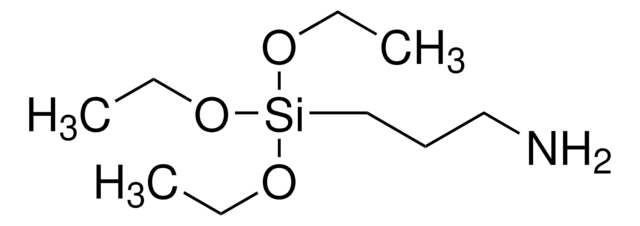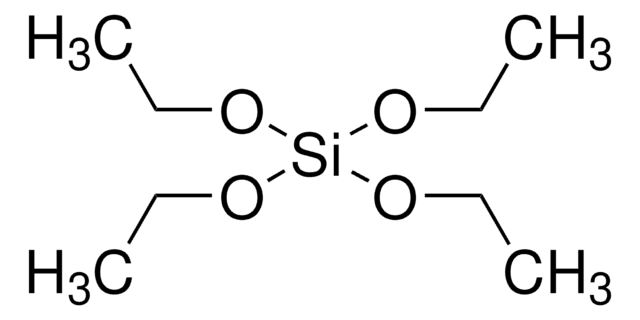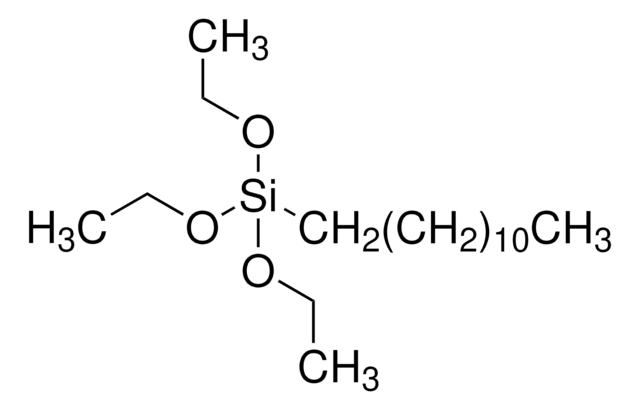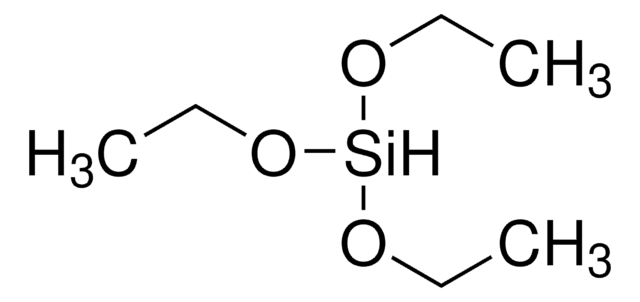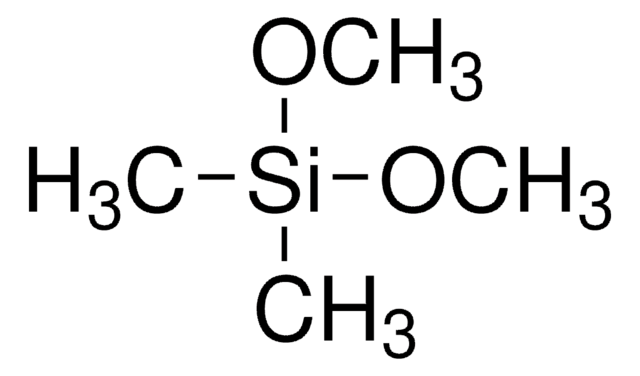440213
Triethoxy(octyl)silane
97%
Synonym(s):
Octyltriethoxysilane
Sign Into View Organizational & Contract Pricing
All Photos(1)
About This Item
Linear Formula:
CH3(CH2)7Si(OC2H5)3
CAS Number:
Molecular Weight:
276.49
Beilstein:
2325287
EC Number:
MDL number:
UNSPSC Code:
12352103
PubChem Substance ID:
NACRES:
NA.23
Recommended Products
Quality Level
Assay
97%
form
liquid
refractive index
n20/D 1.417 (lit.)
bp
84-85 °C/0.5 mmHg (lit.)
density
0.88 g/mL at 25 °C (lit.)
SMILES string
CCCCCCCC[Si](OCC)(OCC)OCC
InChI
1S/C14H32O3Si/c1-5-9-10-11-12-13-14-18(15-6-2,16-7-3)17-8-4/h5-14H2,1-4H3
InChI key
MSRJTTSHWYDFIU-UHFFFAOYSA-N
Looking for similar products? Visit Product Comparison Guide
General description
Triethoxy(octyl)silane (TEOS) is an alkoxide organosilane with four ethyl ester sidechains. It is used as a self-assembled monolayer and provides a hydrophobic coating with low surface energy. The water contact angle is in the range of 150-170°.
Application
Aluminium alloy can be coated with TEOS and 1H, 1H, 2H, 2H perfluorooctyl trichloro silane (PFOTS) to obtain superhydrophobicity with a high contact angle of 160-170° for vessel hulls and marine systems. It may be used to stabilize the porosity for a colorimetric sensor for immediate color changes, which finds potential application in the detection of toxic gases. It may also be used in the production of hybrid zeolites.
Triethoxy(octyl)silane may be used to prepare several formulations for fabricating low-cost, colorimetric sensor arrays to detect toxic gases.
Signal Word
Warning
Hazard Statements
Precautionary Statements
Hazard Classifications
Skin Irrit. 2
Storage Class Code
10 - Combustible liquids
WGK
WGK 1
Flash Point(F)
212.0 °F - closed cup
Flash Point(C)
100 °C - closed cup
Personal Protective Equipment
dust mask type N95 (US), Eyeshields, Gloves
Choose from one of the most recent versions:
Already Own This Product?
Find documentation for the products that you have recently purchased in the Document Library.
Fabrication of Superhydrophobic Al5083 Aluminum Alloy for Marine Applications.
Javad F, et al.
Protection of Metals and Physical Chemistry of Surfaces, 54(5), 899-908 (2018)
Danielle R Scheff et al.
Soft matter, 16(24), 5659-5668 (2020-06-11)
Macromolecules can phase separate to form liquid condensates, which are emerging as critical compartments in fields as diverse as intracellular organization and soft materials design. A myriad of macromolecules, including the protein FUS, form condensates which behave as isotropic liquids.
A colorimetric sensor array of porous pigments.
Lim H, et al.
Analyst, 134(12), 2453-2457 (2009)
A colorimetric sensor array of porous pigments
Analyst, 134(12), 2453-2457 (2009)
Robust multifunctional superhydrophobic coatings with enhanced water/oil separation, self-cleaning, anti-corrosion, and anti-biological adhesion.
Cho E, et al.
Chemical Engineering Journal, 314, 347-357 (2017)
Our team of scientists has experience in all areas of research including Life Science, Material Science, Chemical Synthesis, Chromatography, Analytical and many others.
Contact Technical Service

